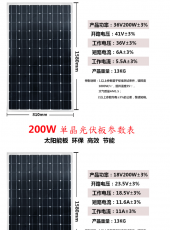How does one choose a panel?
I have a 400ah lithium battery, 13.3 resting voltage, 14.4 charging.
I was looking at the panels available. I would like 2 panels of 200W each (that's pretty much what fits on the roof).
Most panels come in 18V and 36V version.
I guess it's for PWM controller in 12V or 24V setups.
But, what about MPPT?
I have a Victron 100/30.
Should I get the lower voltage, but higher amperage wired in series, or the higher voltage, and lower amperage wired either in series or parallel?
Would there be an advantage to either?
Thanks!
I have a 400ah lithium battery, 13.3 resting voltage, 14.4 charging.
I was looking at the panels available. I would like 2 panels of 200W each (that's pretty much what fits on the roof).
Most panels come in 18V and 36V version.
I guess it's for PWM controller in 12V or 24V setups.
But, what about MPPT?
I have a Victron 100/30.
Should I get the lower voltage, but higher amperage wired in series, or the higher voltage, and lower amperage wired either in series or parallel?
Would there be an advantage to either?
Thanks!



